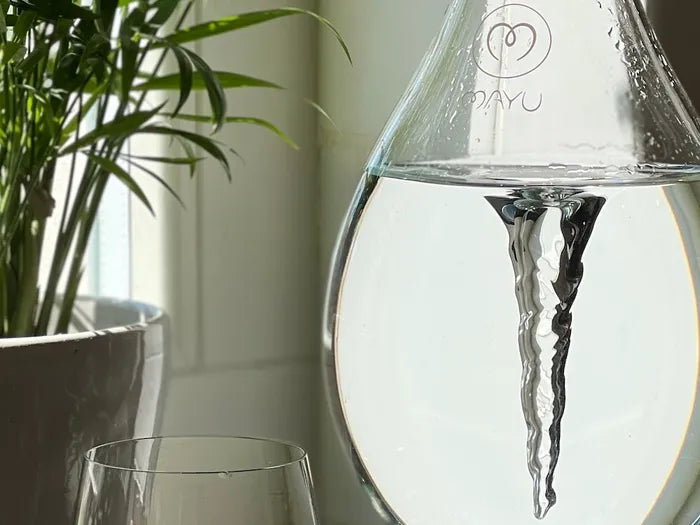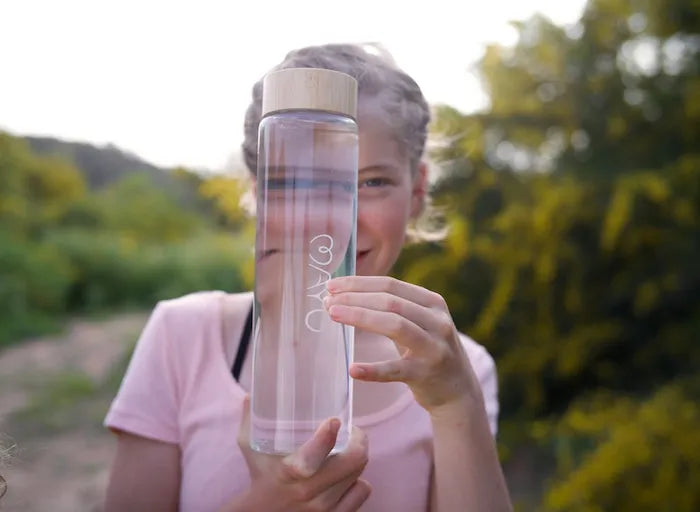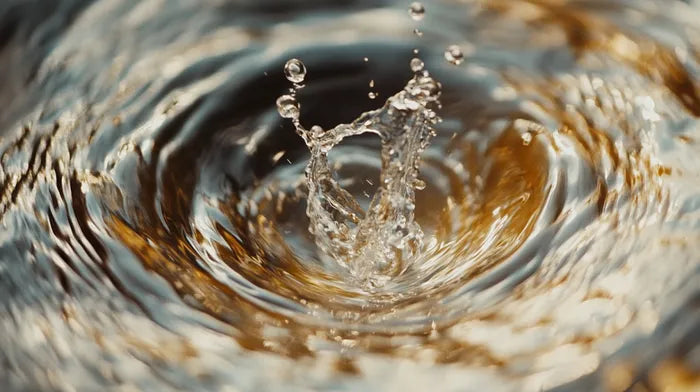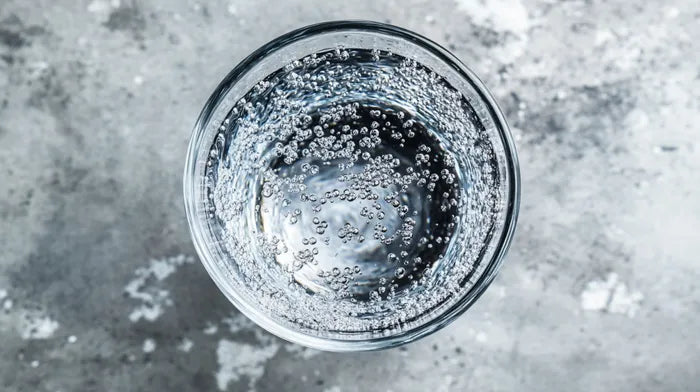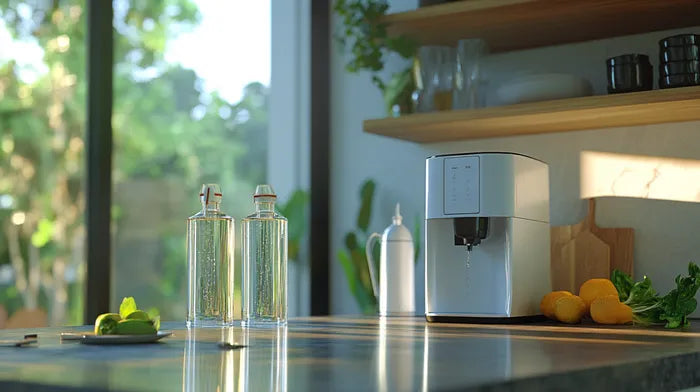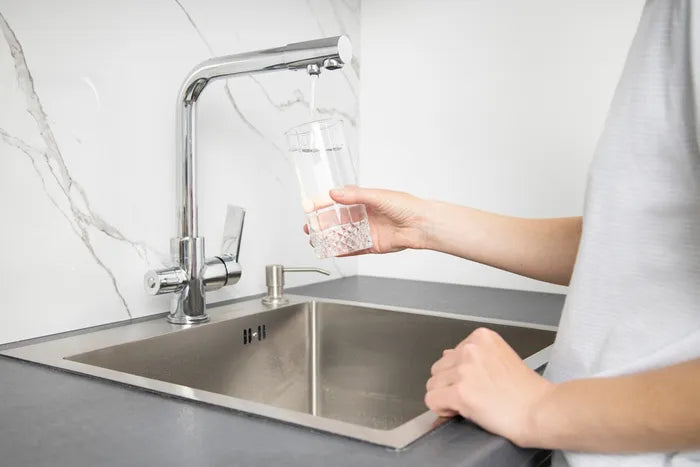Which Water Filter Should We Use?
Published January 15, 2025

Having learned about water and the water industry for nearly a decade, we are very often asked: what kind of water filter should I get in order to ensure drinking clean, healthy water? Our answer is always: it's complicated! A wide range of commercial filters and membranes are available. Many of them are good but none of them provide a perfect answer to everyone’s needs. We hope to shed light on this vital issue in this blog post.
Water is life - Water is the universal solvent
We know that all life as we know it depends on water. If not for this crucial ingredient, the entire planet would just be dust floating in a dust bowl, like Mars or our closest neighbor, the Moon. Even so, water requires certain characteristics to sustain life. Did you know? Pure liquid water, that is H2O only, is actually rare to find on Earth. Sure, pure water molecules exist as vapor in the air and clouds, but once these accumulate to droplets, everything changes. Pure water is ”hungry”, also described as the “universal solvent” - it readily absorbs and dissolves more substances than any other liquid. This is essential to life because many of those dissolved substances nourish and enable healthy living. So, on one hand, those could be dissolved minerals in water, essential for the wellbeing of every cell in our body but they could also be heavy metals that are harmful to our health even at very low doses.
Other contaminants include manufactured chemicals, natural-born elements such as antimony and arsenic, and more. Water can also harbor biological contaminants such as bacteria, viruses, and protozoa.
Do you know what’s in your tap water?
One of the main disadvantages of centralized water distribution systems is the lack of information regarding their quality. Sure, your municipal water board takes pride in treating and delivering healthy water to your tap, and you may even receive quarterly reports about its quality. The problem is always what happens to the water on its way to your tap and what your water board is not testing for. It’s important to understand that many of our modern-day water quality crises are due to these issues.
The Flint Water Crisis, for example, was brought on when a municipal water provider changed its water source to a new one. Both sources were sound and healthy but because of changes in chemical-physical attributes of the new water, lead from aging pipes leached into the drinking supply and poisoned an estimated 100,000 people.
Physical Filtration
These are the simplest forms of filters. These types of filters can usually reduce the concentration of contaminants but do not remove them completely. Here you can also find ceramic microporous gravity filters, mesh filters, disc filters, and more. Some are stand-alone while other products use physical filtration as the first step of a multi-step process. Physical filtration removes suspended materials floating in the water. Usual filtration sizes can be 5-15 µm (a µm is one-millionth of a meter or 0.000001m) for the polypropylene type candle filters down to 0.01µm for ultrafiltration membranes.
Physical filtration acts as a barrier for suspended materials in the water. If the particle size is larger than the rated filtration size, they will usually be filtered and removed from drinking water. Nothing smaller than the filtration size or dissolved in the water will be filtered. So organic contaminants, heavy metals, bacteria (bacteria are around 1µm) and viruses that were in your tap water will still be there. We recommend this step as an important pre-filtration step before other filters such as activated charcoal and reverse osmosis.
Activated charcoal filters
A little known fact is the Egyptians discovered that storing water in charcoal, made it stay fresher and taste better, carbon has been a standard feature in water treatment and its centuries of popularity are testament to its effectiveness.
Activated charcoal filters come in different shapes and sizes. There are some well-known offers on the markets in different configurations. Most well-known are the pitcher filters but carbon filters can also be found in under-the-sink, gravity-fed, and water bar systems.
Activated charcoal is a great solution for removing chlorine and organic compounds from drinking water. Due to its humongous surface area (one pound of activated carbon contains a surface area of approximately 100 acres!) and the ability for chemical adsorption, chlorine is reduced and volatile organics which can include pesticide residues and others are adsorbed to the filter. Through this technology, bad tastes and odors, coming from chlorine and organic material are also neutralized.
Many times activated charcoal is the second step of a multi-step treatment process which may also include physical filtration through polypropylene candle filters and ceramic microfiltration.
Point of Use (PoU) reverse osmosis systems also use activated charcoal pre-filtration steps to neutralize chlorine as reverse osmosis membranes are easily damaged by chlorine.
Activated charcoal filters by themselves are usually not effective at removing minerals and dissolved inorganic compounds. This is both good and bad. The good part is that nutritious minerals from your tap water pass through the filter but contaminants such as heavy metals (Lead, Mercury, Arsenic, and more) are left in the water. Because of this, many champions selling activated charcoal also include specialized resins for removing inorganics. These are usually legacy IP and should be evaluated separately.
Another serious drawback of activated charcoal as a stand-alone filter comes from the reaction between adsorbed organic matter and activated chlorine. When these two react, they produce Trihalomethanes (THMs) such as chloroform and other disinfection byproducts known to be carcinogenic. The best way to minimize exposure to these bad boys is to change your activated carbon filter at vendor-recommended intervals and not keep an activated charcoal filter on your system for months on end.
If your drinking water source is a lake or river, the risk of THM production is much higher due to the higher concentration of organic matter present.
Distilled Water
Distilled water is a type of purified water that has gone through the distillation process and removes contaminants as well as natural minerals, however, a little-known fact is that it is best used in small appliances to avoid mineral buildup.
Distilled water has a laboratory, industrial, medicinal and perfumery, and food processing uses. It can however be used as the most preferable type of water in these industries. Using it as drinking water falls into the last category and should not be seen as an alternative to other types of drinking water due to the lack of essential minerals. Fun fact is that at most, 8 glasses of hard distilled water only fulfills 15% of the organic minerals calcium and magnesium daily, which are the minerals that comprise most of our daily allowance.
Reverse Osmosis
These types of systems are becoming more popular as customers are becoming aware of the quality of water they drink. Reverse Osmosis systems usually include 3-6 water treatment steps, all residing under your sink.
Reverse osmosis systems begin with a physical filtration step and carbon block filtration to remove both suspended matter, chlorine, and dissolved organic matter. The water then undergoes a Reverse Osmosis step which uses water pressure to “push” only (almost) H2O through a semipermeable membrane. The Reverse Osmosis Membrane process removes over 98% of dissolved matter from the water, making the water essentially distilled or very close to pure H2O. After the membrane process, water is sometimes post-treated to improve taste and add minerals, is stored in a plastic-lined tank beneath the sink, and dispensed via a tap or dispenser, which resides above the sink.
Water produced by Reverse Osmosis is almost distilled meaning that all toxins AND beneficial compounds have been removed. Drinking these depleted waters is not recommended by the World Health Organization because nutritious elements such as Calcium and Magnesium along with trace elements have been removed from the water.
Distilled water is also “hungry” wanting to dissolve anything it comes by. This can be plastic piping, heavy metals from bad fittings, and other contaminants. Leaving distilled water in the under sink tank is also an issue because the water stagnates in a plastic-lined tank. Many reverse osmosis systems integrate another activated charcoal filter to remove bad taste usually originating from storing almost distilled water in a plastic tank.
Recap
Which type of water filter you choose for your home is up to your personal values, lifestyle and understanding. There are some players out there today that are trying to solve the problem of both the lack of knowledge as to the quality of tap water at your home, while other companies are working to produce specialized filters and water treatment systems to improve on current standards. This way or another, knowing what’s in your tap water would be the ultimate first step in understanding and minding it.












